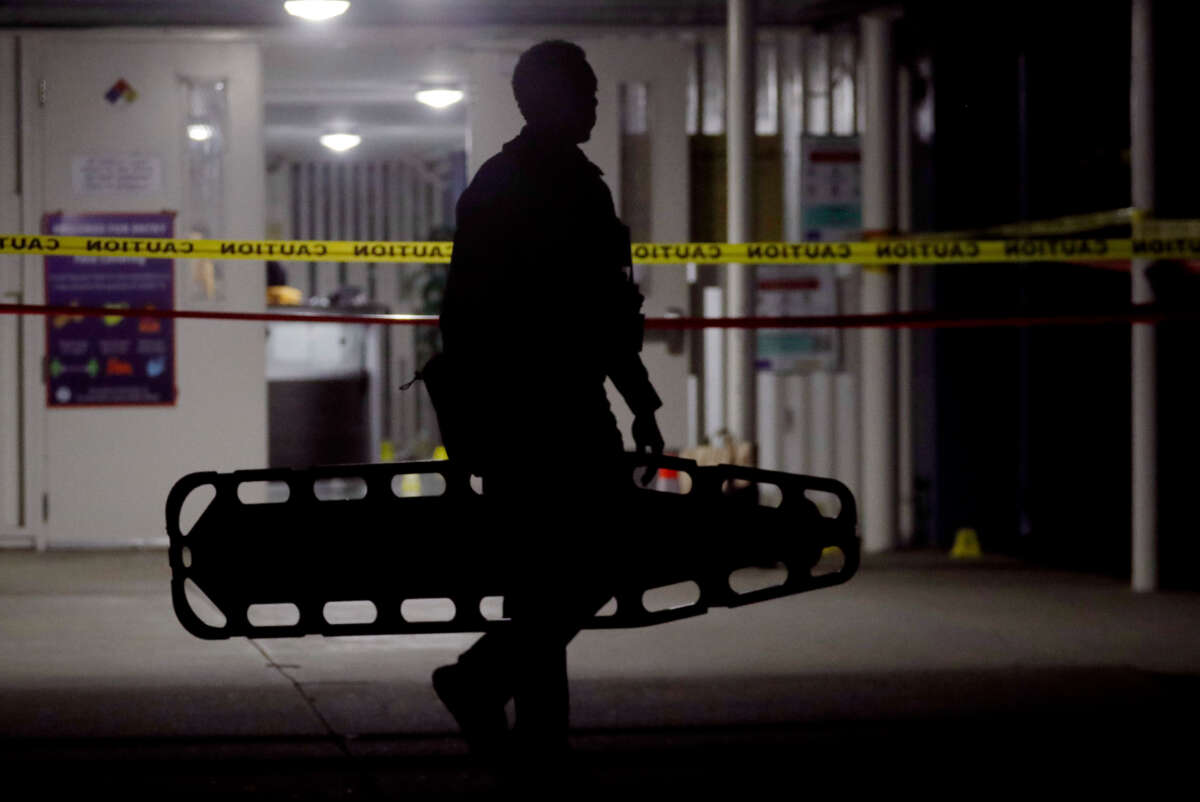The U.S.’s gun violence crisis is shattering records as the number of school shootings hit a record high in 2022, according to a grim new analysis released on the fifth anniversary of the shooting at Stoneman Douglas High School in Parkland, Florida, on Tuesday.
According to The Washington Post, there were 46 shootings at K-12 schools in 2022, surpassing 2021’s record of 42 school shootings. Thirty-four students and adults were killed in these shootings, according to the analysis by the Post’s John Woodrow Cox and Steven Rich. In all, 43,450 children experienced school shootings last year.
This gruesome statistic is emblematic of a growing gun violence problem in the U.S., which is the only wealthy country that experiences anywhere near this level of gun violence. Between 1999 and 2018, or over a 20-year span, over 187,000 children had endured a school shooting, the report found. Over the course of the next five years, that number nearly doubled, and now 338,000 students have experienced a shooting at their school — a place where children are meant to be safe and supported.
The increase in school shootings follows an increase in mass shootings and firearm deaths generally across the U.S., which have increased precipitously since the assault weapons ban expired in 2004 and especially in recent years. These statistics have largely been compiled by journalists and non-federally-funded sources, as federal funding to research gun violence was severely restricted for 25 years due to lobbying from the National Rifle Association (NRA).
Gun violence is so pervasive that only a few mass shootings break through to the public consciousness each year, despite there being multiple mass shootings each week on average; over the roughly six weeks of 2023 so far, there have already been 67 mass shootings, according to the Gun Violence Archive.
The most deadly school shooting in 2022 was in Uvalde, Texas, when an 18-year-old gunman opened fire at Robb Elementary school, killing 19 children and two adults; dozens of other school shootings, which took the lives of children across the country, went largely unnoticed by the public and the media.
Shootings, widely known or not, have a long-lasting impact on communities, imparting deep trauma to children, parents, and staff. The Washington Post highlighted an instance in Charlotte, North Carolina, where a 12-year-old boy wrote a will during a shooting at his school, with the name of his mother at the top of the paper, writing, “I am sorry for anything I have done,” “I am scared to death,” “I will miss you,” and “I hope that you are going to be ok with me gone.”
The Post also brought up an incident in 2019, when a 14-year-old boy in South Carolina killed 6-year-old Jacob Hall at Townville Elementary and injured another student and a teacher with his father’s handgun. The Post traveled to Townville and spoke to students and educators, illustrating a community of hundreds still living with the trauma of the shooting.
“Siena Kibilko, a first-grader who’d also been on the playground, began locking all the doors at her house and dropping to the ground when she heard loud noises,” the Post reported. “Jacob’s friend, Karson Robinson, was stricken with guilt, convinced that he should have saved Jacob’s life. For the following Valentine’s Day, Karson wrote a card in his memory: ‘I loved him but he diyd but he is stil a life in my hart.’” Townville’s principal had to ban balloons inside the school after panic ensued when a balloon popped at a school dance six months after the shooting.
Even as this story was being written, a community was reeling from yet another mass shooting. On Monday night, a gunman opened fire at Michigan State University, killing three students and injuring five others. Students and faculty sheltered in place for hours while officials searched for the gunman, who was found dead from a self-inflicted gunshot.
In response to the shooting, President Joe Biden has called for Congress to pass “commonsense gun law reforms,” including a ban on assault weapons. Aside from last year’s gun reform bill, which gun safety advocates have said is inadequate in preventing gun violence, Congress has not passed significant gun legislation in decades.
48 Hours Left: All gifts to Truthout now matched!
From now until the end of the year, all donations to Truthout will be matched dollar for dollar up to $28,000! Thanks to a generous supporter, your one-time gift today will be matched immediately. As well, your monthly donation will be matched for the whole first year, doubling your impact.
We have just 48 hours left to raise $28,000 and receive the full match.
This matching gift comes at a critical time. As Trump attempts to silence dissenting voices and oppositional nonprofits, reader support is our best defense against the right-wing agenda.
Help Truthout confront Trump’s fascism in 2026, and have your donation matched now!
